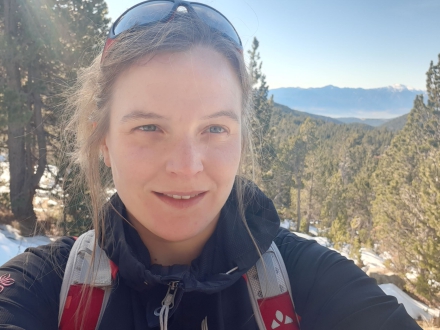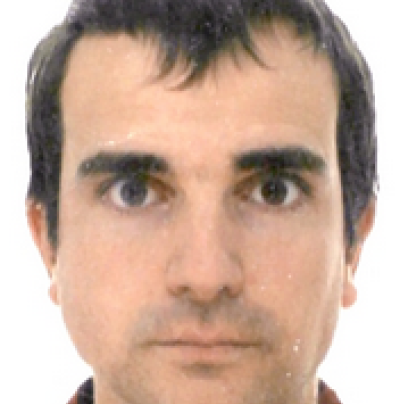You are here
Programme LifeWatch Biodiversity Day, 26 January 2023
KEYNOTE: Area of Habitat models for the world’s terrestrial birds and mammals (Maria Lumbierres, UvA)
The current rate of biodiversity loss is over 1,000 times higher than background levels, therefore, finding mechanisms to identify where species’ suitable habitat is located is an urgent matter to direct conservation action. Several approaches have been developed to map global species distributions, but accurate spatial data are only available for a limited number of species. At the global scale, the most comprehensive assessment of species distributions are the IUCN Red List geographical ranges, however, they usually contain areas that are not occupied by the species. Area of habitat models is the habitat available to a species, that is, habitat within its range and is an attempt to reduce commission errors in range maps. The AOH maps are produced by removing unsuitable habitats from the distribution ranges. To map habitats, we developed a novel data-driven crosswalk between the IUCN Red List Habitats Classification Scheme and the Copernicus Global Land Service Land Cover, using a logistic regression model. With this, we were able to develop an updated version of global AOH maps for terrestrial mammals and birds at 100m resolution. These maps allowed us to determine the global distribution of mammals and birds at a finer resolution than what could be obtained using ranges. Having fine-resolution distribution maps can help us to guide conservation action worldwide. AOH maps can be used for site-based conservation and protected areas identification. Moreover, having a clear view of the relationship between habitat and land cover helps us to understand the impacts of land-use change on species.
Maria Lumbierres is a postdoctoral researcher at Amsterdam University. She works with spatial modeling and remote sensing to answer questions related to conservation biology and global change. Currently, she is part of the EuropaBON project designing a cost-efficient framework for Europe's future biodiversity monitoring system. She obtained a PhD in Conservation Biology at the Sapienza University of Rome, focused on developing innovative habitat mapping techniques and identifying Key Biodiversity Areas.

Finding the right remote sensing data service for your needs (Julien Radoux, UC Louvain)
The availability of large image data sets from space has tremendously increased during the last decade. Many of these data sets are highly valuable for biodiversity monitoring, yet the size of the data and the diversity of derived products remain a major obstacle for the biodiversity research. In this presentation, we browse the main services based on remote sensing data available for Europe, from raw satellite images to land cover dynamics and thematic products.
Julien Radoux is a research fellow from the Earth and Life Institute of the Université catholique de Louvain. His current research focus on the use of remote sensing and geographic information systems for biodiversity research.

Bio-Oracle v3.0: towards the next-gen data for marine ecological modelling (Salvador Fernández, VLIZ)
High-resolution global environmental datasets are key to any spatial environmental analyses. The Bio-Oracle project has been providing marine data layers for bioclimatic modelling for more than 10 years. The original dataset consisted of 13 environmental variables at present conditions (Tyberghein et al., 2011) and was further expanded later to include environmental data near sea bottom and future climate change predictions under the four relative concentration pathways stated by the United Nations Intergovernmental Panel on Climate Change (IPCC) for the years 2050 and 2100 (Assis et al., 2017).
In this presentation, Salvador Fernández from the Data Centre of the Flanders Marine Institute (VLIZ) provides an update on the development of the next version of Bio-Oracle. The third major release of the dataset features augments temporal and spatial resolution, with a set of 41 environmental predictors, each including 10 decades from 2000 to 2100 at 0.05 degrees. This version includes 18 ecological variables such as water temperature, salinity, sea ice cover and thickness, primary production and concentration of oxygen and nitrate, among others. For future data layers, we use the Shared Socioeconomic Pathways (SSP) climate change scenarios provided by the IPCC Sixth Assessment Report. Another novelty is the multiple ways to access the dataset. In addition to direct download through the Bio-Oracle website (https://bio-oracle.org/), the new version will be powered by an ERDDAP server, which provides a REST API and a graphical web interface for data querying and download in multiple file formats. Clients in R and Python are under development and will offer programmatic access to the server. Furthermore, the dataset will be fit for new data platforms and initiatives such as the European Digital Twins of the ocean, the Microsoft Planetary Computer and Google Earth Engine to support the next generation of marine ecological models.

Linking ecotopes maps and camera traps to assess effectiveness of management actions against African swine fever (Martijn Bollen, UHasselt)
Martijn Bollen is a holder of a Master degree in Biology, and is currently doing a PhD at Hasselt University. His main interest lies in the modelling of the geographical distribution and abundance of Mammals.
During his talk he will focus on a project, in which he collaborated with the Service public de Wallonie, to assess the impact of African swine fever (ASF) and culling efforts on the occupancy of wild boar (Sus scrofa) in the South of Belgium from March 2019 until May 2020. To model these impacts, they used observations from a local camera trapping network, stored on, and processed by Agouti, which is supported by LifeWatch. Additionally, they used ecotope maps also provided by LifeWatch. Using camera trap data they could show that the ASF control measures (i.e., fencing, culling and carcass removal) implemented in the South of Belgium were effective in further reducing the local wild boar population, which has helped in the eradication of ASF.

Ecological network restoration in the Meuse-Rhine Euroregion (Quentin Dubois, Biotope Environnement SA)
The Meuse-Rhine Euregio (hereafter “Euregio”) lies in one of the most fragmented landscapes in Northwestern Europe due to intense industrial development, agricultural intensification and urbanization. The Euregio is of crucial importance for large-scale connectivity of several iconic species targeted by WWF Belgium. This region could act as a corridor between areas suitable for example for the European otter (Lutra lutra) and the wildcat (Felis silvestris).
Following a workshop held with the “Three Countries Park” project, the contours of a potential ecological network for the area was defined. The different corridors were then described using a combination of geoprocessing analyses and photointerpretation and opportunities and obstacles for green and blue connectivity in the central part of Euregio were analyzed. A catalogue of measures was proposed to enhance connectivity.
We then focused on the Walloon part of the ecological network to map where the restoration actions could be implemented, where they might be the most helpful and what cost would be associated with it. Finally, the effects of two restoration actions were assessed on landscape connectivity in Wallonia using circuit theory.
Quentin is project manager at Biotope Environnement and is specialized in topics associated to the ecology of threatened species, the impact of project developments, and biodiversity conservation.

The rise and fall of coniferous forest birds in Belgium (Jean-Yves Paquet, Natagora)
As in many other parts of Europe, forest cover increased substantially in Belgium since the 19th century, mainly by afforestation with non-indigenous coniferous trees, especially Norway Spruce in Wallonia and Scots Pine in Flanders. Until recently, the share of monospecific coniferous tree plantation was as high as 45 % in both regions. Consequently, eleven forest bird species associated with coniferous forest progressively settled in Belgium. Recently however, a strong decline of their population was detected in both regions. Ecotope and LifeWatch cartographic data were used in an attempt to disentangle the effect of several possible driving factors behind these trends: the decrease in coniferous cover, the poor sanitary conditions of the coniferous plantations or the changes in climatic conditions.
Jean-Yves Paquet is biologist and works for Natagora, one of the main nature conservation association in Belgium. With the help of many enthusiastic birdwatchers and field ornithologists, among many other activities, Natagora is monitoring bird population in Wallonia and Brussels. LifeWatch products are regularly used by his team to model bird distribution, to define sampling design or to relate changes in bird populations to changes in land use.

Ecotope map of Belgium (Mathilde De Vroey, UC Louvain)
The ecotope database delineates spatially homogeneous ecological units in terms of biotope and land cover. The 2015 version covers provide a consistent database over Belgium. For each polygon, all publicly available information identified as relevant for spatial distribution models (e.g. soil, topography, climate…) can be directly queried from the attribute table. Different land cover indices are derived from a national 2m land cover map that keeps on improving thanks to its iterative building process with end users.
Mathilde De Vroey is currently doing a PhD at UCLouvain, using remote sensing data to improve the characterization of grasslands in the ecotope database.

Biological Valuation Map of Flanders (Toon Spanhove, INBO)
The Biological Valuation Map (aka ‘dé Biologische Waarderingskaart’) is a map of the land cover, vegetation and its biological value in Flanders. The map is widely used for various nature and environment related applications (monitoring, spatial planning, law enforcement). Flanders was a pioneer with this type of wall-to-wall vegetation map. In its first version (1978-1997), the map was completely derived from fieldwork and was literally drawn with pen and paper in the field. In the following decade (1997-2008), a second, more detailed version was created, still largely relying on fieldwork. Nowadays, we are working towards the third version, in which we try to combine fieldwork with other available (geo)data to improve the map’s spatial coverage and increase its updating frequency. The most valuable Natura 2000 areas are still being updated based on field surveys. The recently developed ‘field keys’ drastically increased the quality and the repeatability of the map in space and time. Outside the Natura 2000 areas, the map has not been updated for over a decade and so it has become outdated over vast territories. We are now working towards (automated) workflows for integrating external data sources, in order to keep the map updated without increasing the burden of fieldwork. We focus on the following research tracks:
- Integration of the observations of indicative plant species from the citizens' dataset waarnemingen.be.
- Exploration and integration of relevant data from available datasets, such as ‘Basiskaart Vlaanderen’ (GRB), Open Street Map, agricultural datasets (‘landbouwgebruikspercelen’), lifewatch vegetation map…
- Analysis of satellite and aerial imagery to detect heavily changed areas, ploughing events of grasslands, disappearance of trees and ‘easily’ recognizable vegetation types, using advanced remote sensing techniques.
Toon Spanhove is a biologist with broad interest in ecology and conservation. He obtained his PhD at Ghent University (2012) on avian persistence in forest fragments. Nowadays, he works as a senior ecologist at the Flemish Research Institute for Nature and Forest (INBO). Besides coördinating the institute's research programme on protected nature, he aims to improve the biological valuation map of Flanders using innovative mapping tools.

Biological data in Wallonia (Lionel Wibail, DEMNA)
Lionel Wibail works for the Public Service of Wallonia, in the Department of Nature, Agriculture and Environment studies. As part of their missions, they are responsible for mapping and monitoring ecosystems under the Habitats Directive.
His team uses different base layers (including the IGN landuse, soil maps, aerial photographs and Lidar), combined with field observations, to produce a mapping of all habitats presents within Natura 2000 sites and in other sites of high biological interest. The typology used is EUNIS - adapted to Walloon ecological context.These habitat maps are then the basis for regional monitoring of ecosystems conservation status but are also a valuable source of information for developing and supporting restoration projects, and to spatialize the legal measures to be applied in protected areas.
Combined with environmental predictors, their habitat maps were also used for modeling potential vegetation on the scale of the Walloon territory, e.g. in the framework of the LifeWatch project. This modeling may prove particularly helpful to detect rare or endangered ecosystems outside existing protected areas, and to build a Walloon ecological network.
One of the big challenges they are now facing is mapping the evolution of habitats, and they are very interested in current and future developments of remote sensing, such as detection of landuse change, to help them in this task.

Nature analysis maps of Brussels (Fabien Genart, Brussels-environment)
Fabien Genart is a geographer at Environment Brussels and works on many aspects related to the mapping of nature and ecosystems in the Brussels region. The main themes are the mapping of vegetation and canopy, the accessibility of the population to green spaces and the integration of green infrastructure in regional planning tools. During this day, he will present the evolutions related to the nature inventories in Brussels and in particular the biological evaluation map. This map, which has now been approved by the Brussels government, aims to draw up an inventory of sites of high biological importance and targets areas that are priorities for protection in order to preserve biodiversity in the city.

Mapping of the functional ecological network of Wallonia (Thomas Pollet, ULiège)
Thomas Pollet graduated from Gembloux Agro-bio Tech in bioengineering in 2020. He specialized in natural and forest areas management and is now a researcher engineer for the Walloon project “Ecological network”. This project consists in modeling a functional ecological network at the scale of Wallonia. This network is made of two elements: biodiversity core areas and corridors that connect them together. To avoid the construction of one network for each species, the species are grouped in sets of species sharing ecologically similar needs, each set of species constituting one sub-network. The methodology can be simplified into four main steps: i) finding the delimitation of the polygons that will be used to represent the network; ii) classifying the polygons into sub-networks, iii) finding biodiversity core areas within each sub-network, and iv) running connectivity analysis programs to delineate the corridors. In the first step, polygons are defined based on ecotopes geometry, Natura 2000 sites and marginal lands mapping. In the second step, each polygon is classified in one sub-network using environmental variables from ecotopes mapping. The third step uses biological observation data from survey platform to highlight biodiversity core areas. The last step will not be explained during the presentation.

Marine habitat modelling: a state-of-the-art model to identify favorable growth sites for mariculture (VLIZ, Gert Everaert)
To assess a potential range shift of macroalgae, their habitat suitability in the European marine environment was predicted, as well as the evolution of this habitat suitability by 2100. To predict the habitat suitability, we used a mechanistic model comprising physiological optima and –thresholds, reported in literature, and applied this model to environmental data. Variables included in the mechanistic model are sea surface temperature, surface salinity, photosynthetically active radiation, nitrate concentration, turbidity and surface temperature of the warmest month. Habitat suitability was quantified in European marine waters for six brown seaweeds and three red seaweeds. The model was validated using independent distribution data. Due to climate change, we predict that the most optimal environmental conditions will shift northwards, i.e. 110 to 635 km by 2100, depending on the climate scenario. The results of this research may aid in the decision making process on the location for the aquaculture of certain seaweed species. To make the habitat suitability map relevant for aquacultural purposes, spatial planning of the marine environment was added to the model and the depth of the water column was taken into account.
At the Flanders Marine Institute (VLIZ, Ostend), Gert Everaert leads the research division on ‘Ocean and Human Health’. His research background is in ecological modelling and marine ecotoxicology.

